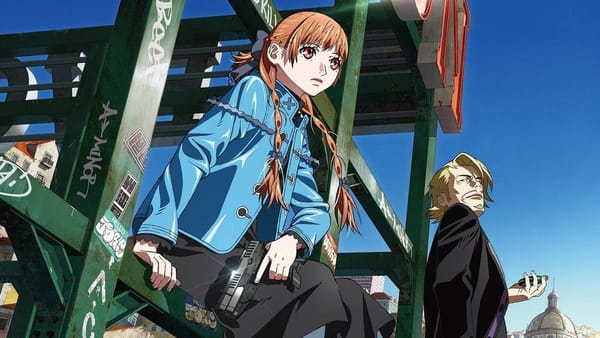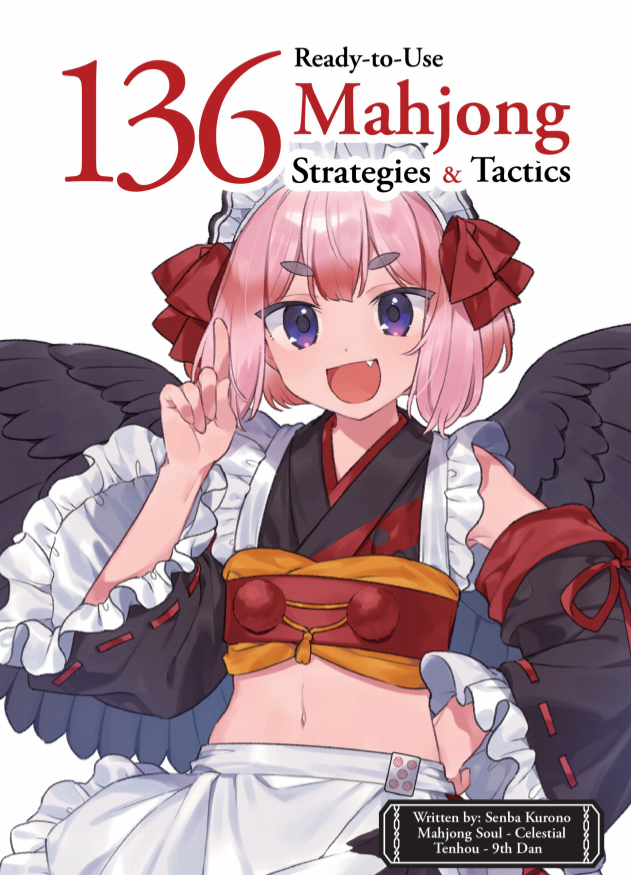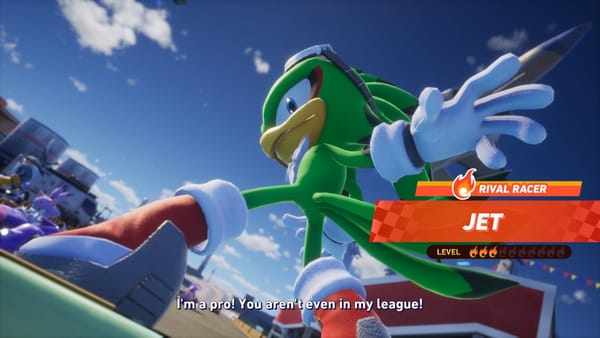I revisited the Mobile Suit Gundam trilogy in theaters and it's still a masterpiece
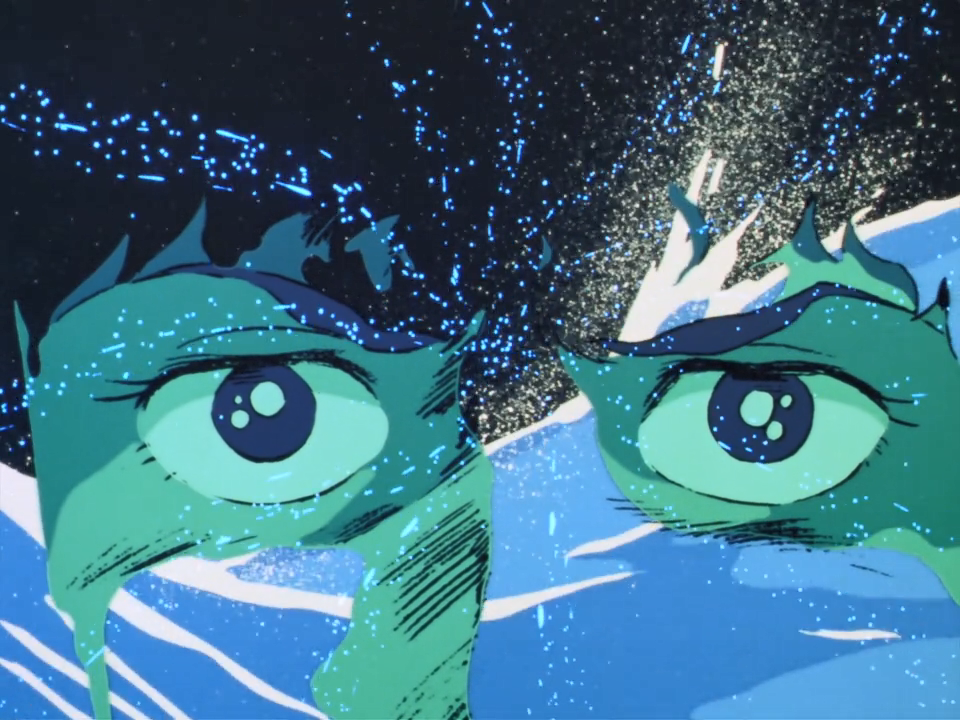
(This will contain spoilers for the now over 40-year-old original Gundam films. These plot points are so old and so well-known that even if you haven’t seen Mobile Suit Gundam, you’ve probably seen an anime that’s made a joke about them. Giving you a spoiler warning for these films is like a film blog warning you that it’s about to spoil Citizen Kane. But I am benevolent, so here it is.)
I have had the unique pleasure over the last month and a half or so of being able to see one of my very favorite anime works— the Mobile Suit Gundam film trilogy— in a limited theatrical run.
Despite the sudden rise in Gundam’s popularity in the West, I didn’t expect to ever get to see all three of these movies in a theater, and I’m quite grateful for the opportunity. They’re quite old, very long, and rather talky: not exactly the kind of thing fans of modern anime would flock to. I counted less than ten people at Gundam II and III.
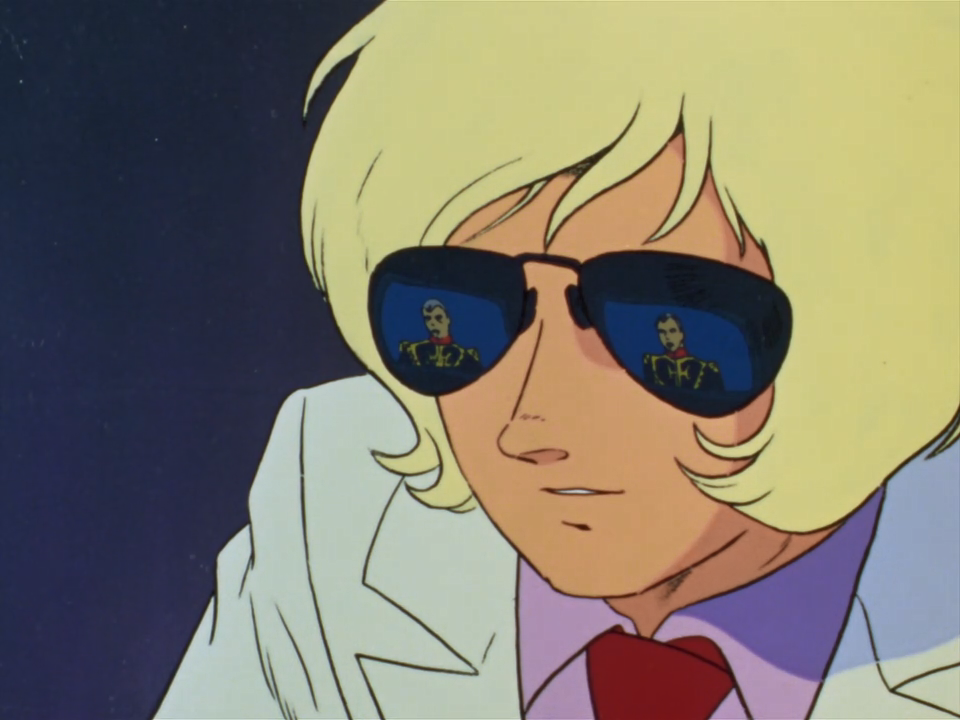
Gundam I weeded out the unworthy. This retrospective wasn’t promoted with any actual footage or images of the original movies, and as I already said Gundam’s popularity in the west is very new-found. So, as a row of obnoxious nerds simultaneously whined behind me as the movie started: “I didn’t know it was old!”
(I got up and moved to a better seat. The half-full crowd, veteran and newbie alike, talked through the entire movie. It was so bad that I sought out different theaters for II and III, much further away, specifically to avoid the people I watched the first film with. Please shut up at the movies. Mystery Science Theater 3000 is a TV show. You aren't funny. Nobody is paying to hear you yell memes at the screen.)
Rather than a marathon viewing, each movie ran about two weeks apart; plenty of time to process, think and talk over each individual chunk of the series. These are movies I try to return to every couple years, because they’re dense enough to reward the viewer for their attention. I notice something new every time I watch these movies, and this past month was no exception.
The Gamesoft Robo Fun Club is a solo labor of love that depends entirely on paid subscriptions from readers to exist. If you enjoyed this piece and you'd like to see more, I'd love to see you become a regular or paid subscriber. Paid subscribers get exclusive posts. Thanks for reading the pitch and hope to see you subscribe!
Mobile Suit Gundam (I)
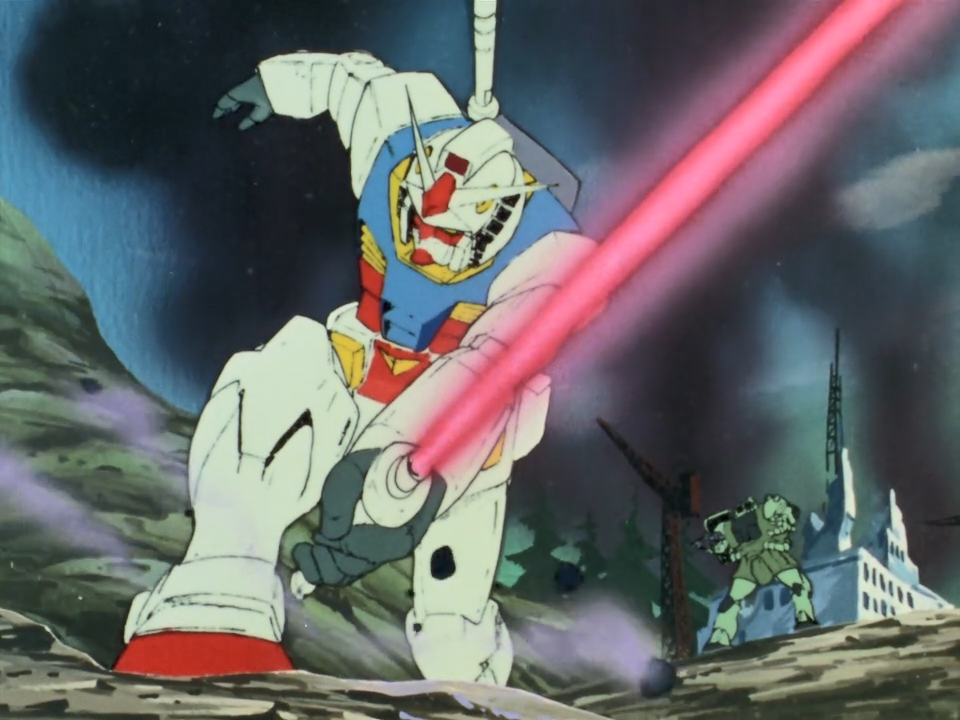
A cobbled-together compilation film— historically, a desperate Hail Mary play to get the canceled Gundam TV series a proper conclusion— that even at two and a half hours doesn’t quite have enough time. The very beginning of Amuro Ray and the White Base’s journey of survival in the One Year War is a story of civilians attacked in their homes, forcibly drafted into a brutal war, and their traumatic transformation into a fighting force, tools for an indifferent government.
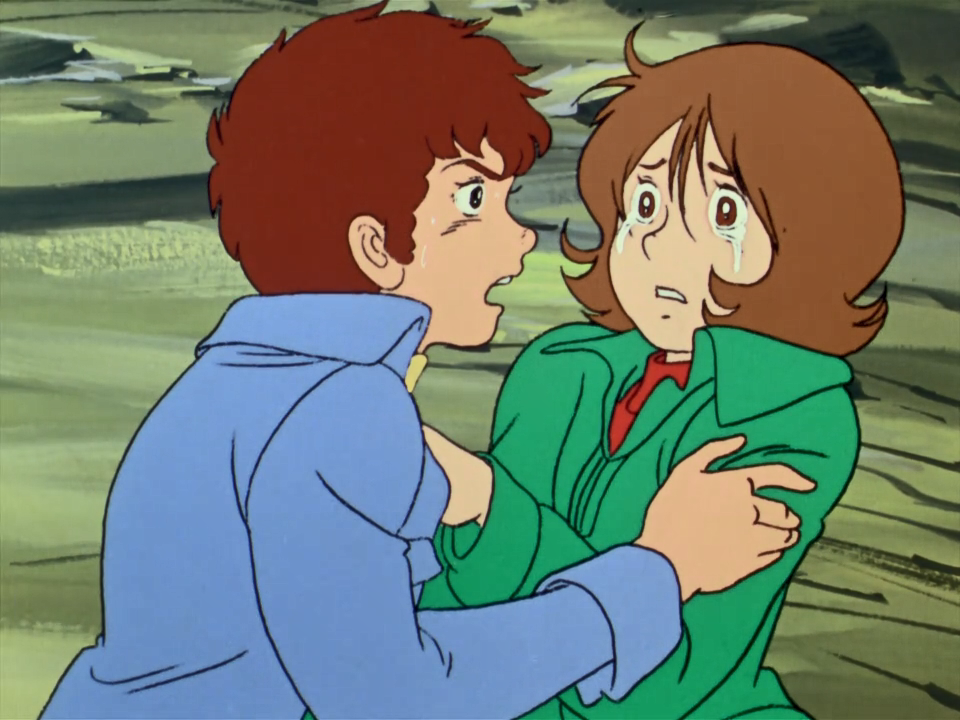
Elements of the original Gundam’s story that eventually became part of the blueprint for young adult sci-fi anime are so familiar to anime viewers today that they might not consider that it was really quite bold, even pioneering with some of this material. Gundam depicts wartime carnage, heaps of innocent corpses— often people we knew and cared about— slaughtered for no good reason by the “hero” and “villain” sides of the war alike. It shows us bereaved mothers and small towns under occupation, as the war tramples every aspect of civilian life.
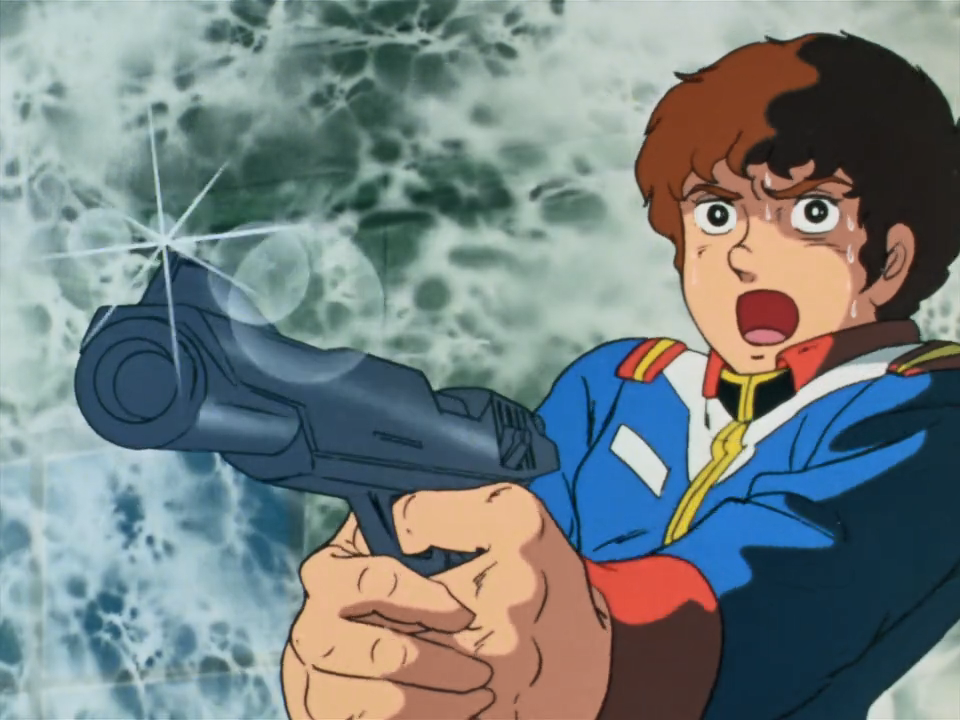
Centrally, the civilian crew of the White Base and their boy ace transform into hardened military officers just to stay alive. The comic relief children frolicking around the battleship are also a reminder of how nobody belongs on White Base. Gundam never forgets the essential humanity of its characters, nor to show that its heroic teen robot pilot is in reality an introverted, confused, and traumatized young boy who’s got a lot of growing up to do.
Gundam is its own new and fully realized universe, which is the reason people fall into it. But it’s not just the depth of its story and lore that grabs people; it’s the fullness of its presentation that implies all that lying beneath the surface.
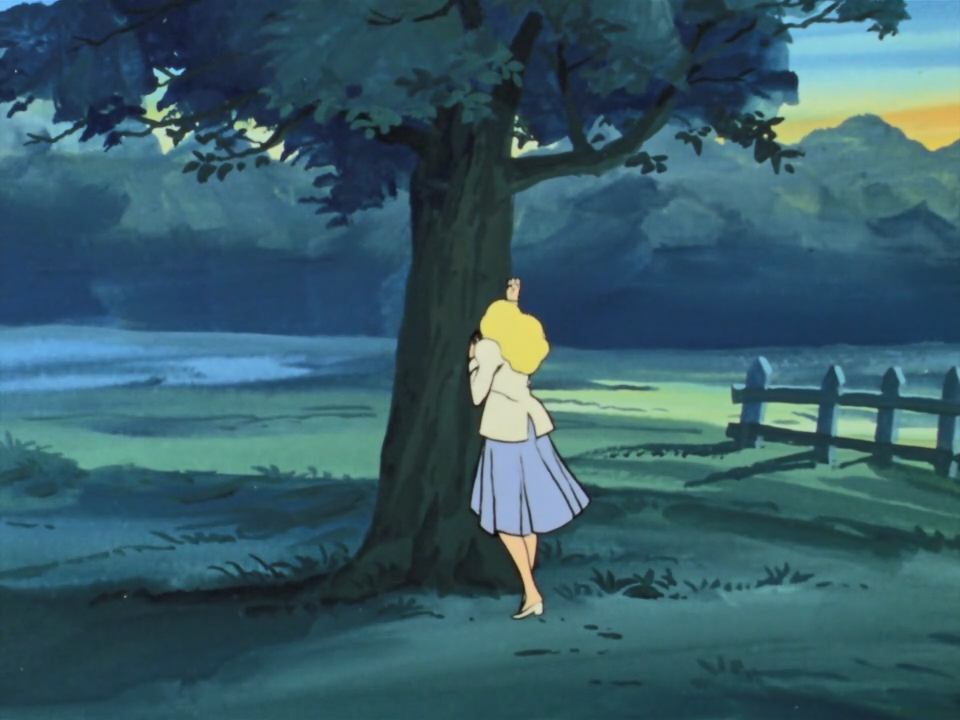
Watching Mobile Suit Gundam I this time, I paid the most attention to its animation: highly detailed, but not necessarily realistic. Yoshikazu Yasuhiko and company’s drawings are so exceptional, and Yoshiyuki Tomino’s writing and direction constantly hammer home a sense of place by bringing our attention to world-building details anywhere that they'll fit.
It is no surprise at all that such a dense work inspired such a massive line of other works of officially licensed fanfiction— even the recent Netflix Gundam film is effectively one of these!— that continues on to this day. It simply sparks the imagination at every turn.

And it ends abruptly but tantalizingly, at the dramatic close of one classic storyline and at the start of another. You should be hooked by now, it hopes. The first film is often considered a “hump” to get over— my shitty crowd audibly had a difficult time getting through the two and a half hour movie when robots were not fighting on screen— but I think that downplays the amount of great material in there. Amuro’s mom is in this movie. The famous “Bright slap” is here too. “This is no Zaku, boy!” is also in this movie! Not to even mention the tale of Garma Zabi and his good friend Char Aznable…
Mobile Suit Gundam II - Soldiers of Sorrow
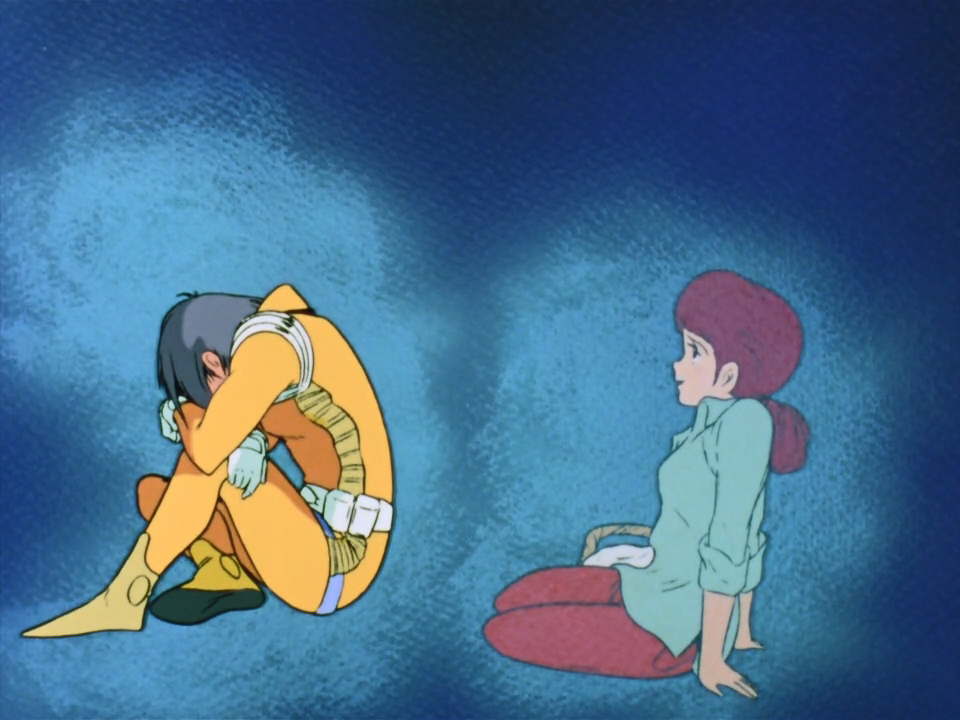
An on-the-nose title for this middle portion of Gundam, where the intensity of the war ramps up, allowing the series to start to get into its bread and butter: tragic, romantic casualties of war.
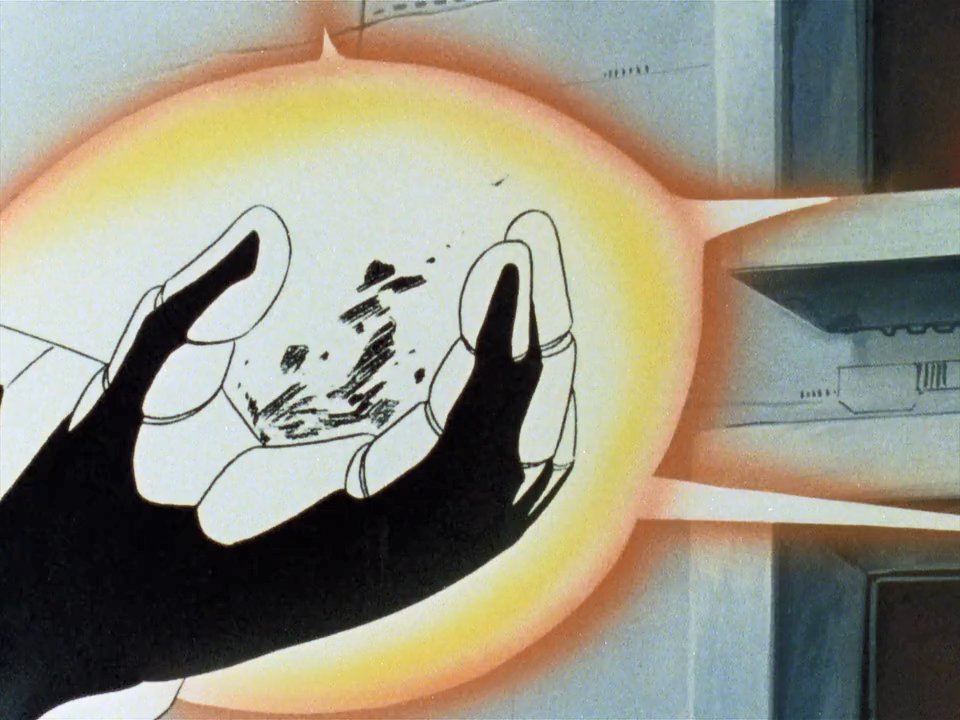
It’s not a lot compared to later productions, but you can see where creator Tomino starts to earn his old, long-lost “Kill ‘Em All” nickname. (The tagline of the Gundam TV series, played at the end of every episode, was “Who will survive?”) Characters we’ve gotten to know and like— almost invariably the best and kindest people in the crew— face ugly deaths. Is it a bit sentimental, with the sweet, innocent girl doing spy work to feed her family, the honorable foe, or the engaged couple just about to get married? Absolutely. Does it work? You bet it does; I couldn’t forget Miharu if I wanted to.
Hammering on this theme, The White Base and crew themselves are deployed as sacrificial pawns throughout the film by Federation brass. Every middle-management suit they meet says something to the effect of “Jesus Christ, you kids shouldn’t be out there, especially not doing THAT!” before sending the crew off to lure Zeon’s strongest soldiers after them. At these moments, the officers mumble at each other— in exposition added for this film— that maybe those kids are Newtypes, humanity’s next evolution… because how else are those poor bastards still alive?

Meanwhile, Amuro is trying to reconcile his shame at being drafted into becoming an overnight murderer with the undeniable pride he takes in being able to protect people with the Gundam. He’s also a 15-year-old boy, so he reconciles these things about as badly as he possibly can. I love the Dumb Bitch Amuro we see in this movie. The mere sight of the beautiful Matilda has just put him through puberty, and he’s just discovered arrogance in the White Base brig. Using the ship-wide comms system just to whine “I can pilot the Gundam better than anyone!” at everyone is just so wonderfully pathetic, and upon this viewing it’s now one of my favorite lines.
And as this is the peak of Gundam’s casualties of war, it’s also the peak of robot battling chaos in the original series. The battle of Jaburo that finishes the film off is an animation spectacle in any era, as Mobile Suits fight in the forest, at sea and underground. The depiction of the machines isn’t fully married to technological realism at this early point in the Gundam metaseries, so the robots still move like cartoons, not cars. Even goofy designs like the Acguy and the Z’Gok are actually really cool and intimidating in their original appearances.
Perhaps owing to its iconic status as a Gundam otaku anthem, I had never noticed how clumsily deployed the theme song “Ai Senshi” (also “Soldiers of Sorrow”) was in this movie. It starts, plays a verse, and starts over again. When you know the song, it feels a bit like they’re beating you over the head. Given the themes of the film are poetically and directly stated in the song lyrics, perhaps they are.
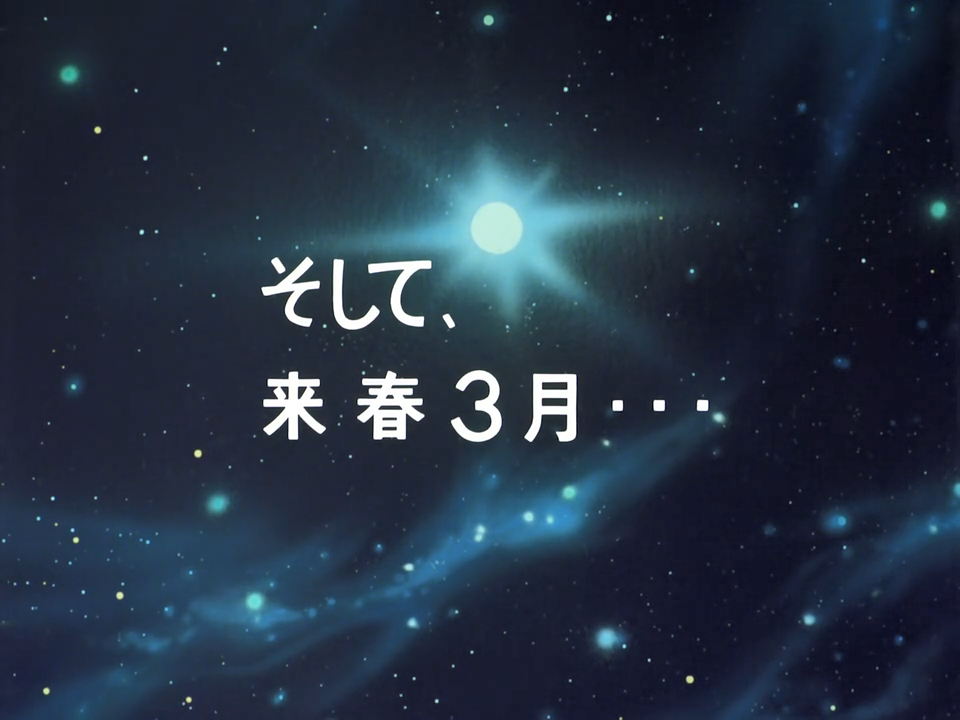
This theatrical cut had a (Japanese) text teaser at the end reminding the audience to go see Gundam III when it came out in a few months; I don’t recall this on the versions of the film I own. It was really nice to see this little teaser; it places you for a moment in the New Anime Century, makes you one of those early-80s fans buzzing with excitement for the imminent release of what would prove– what you, dear fan, already knew would be– one of the greatest anime features ever made.
Mobile Suit Gundam III - Encounters in Space
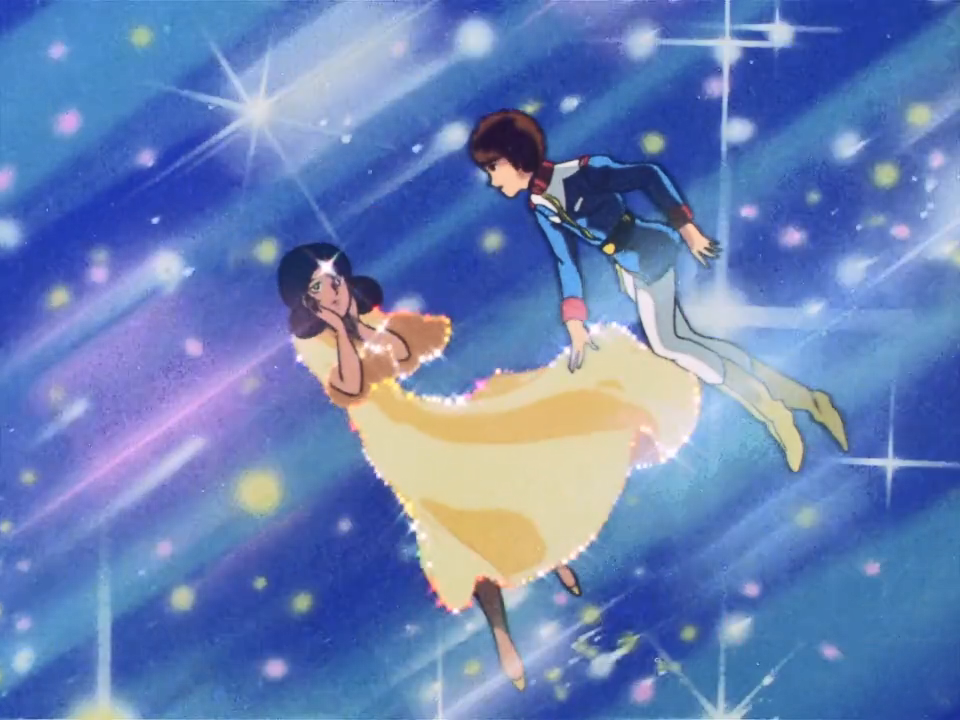
Now here’s the big one; the crown jewel of the original Gundam and one of the great classics of the anime medium, period. While the previous compilation movie has a bit of newly animated material— notably the “photo with Matilda” scene— and some added dialogue to explain the Newtype concept, it’s still basically a compilation of TV series episodes. Encounters in Space is something else; it’s a redo of the ending of the famously cancelled TV series.
Over half of the film is new material: rather than the newly animated material sticking out as you’d expect, you’ll be startled when something rough-looking from the TV series sticks out among the pristine, polished, flawless animation that fills most of this movie. The aforementioned Yasuhiko is on fire in this movie; the characters feel more human than ever before in the series.
Which is important, because Encounters in Space settles on one last tragic romance: the ill-fated love triangle between Amuro, his lifetime rival Char Aznable, and the tragic Newtype ahead of her time, Lalah Sune. It’s hard to explain how important this storyline is to making Gundam what it’s remembered as today, or how deeply resonant and powerful the scenes with Lalah are. A lot of Gundam viewers don’t like when the series dips into the supernatural, but to me it’s the final bit of spice.

Amuro’s Newtype hallucination is perhaps my favorite part of the entire film trilogy. What is the whole Newtype business? Is it really important? I think it is. If Gundam was only a war series, we’d only be able to take away the reality of the situation: the meaninglessness of the war, good people dying for the arrogance of the Zabi family or the bureaucratic stupidity of the Federation. Without the space psychics, and what they represent, Gundam would merely be sad.
But what the space psychics represent is hope for the future, a way out of this bullshit we’re living through, a dream of a humanity that’s finally learned its lessons and moved past the false inevitability of war. And not coincidentally, the introvert’s deep, secret longing for real human connection– but the right connection, like the one that Amuro finds too late in Lalah Sune. Maybe that’s why it’s fantasy, but that’s also what makes it beautiful. It’s not a surprise at all that a film this resonant helped to spark a movement.
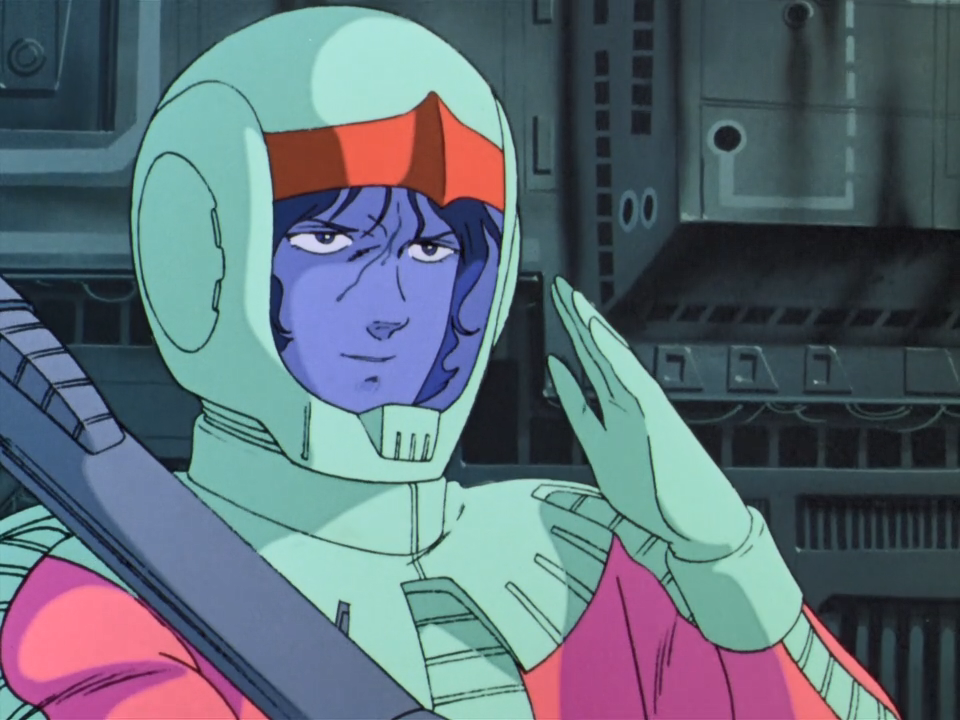
Somewhere in there, the One Year War ends too. Everything comes crashing down in the battle of A Bao A Qu. The Zabis murder each other, heads go flying, legs become unecessary, and our heroes’ home explodes. The crew of the White Base do not defeat the true enemy, nor do they end the war singlehandedly. But they survive. They find some connection, and some solace, and at that moment the movie ends. Because that’s what it’s about.
Gundam III is the greatest. Everyone who wants you to “get into Gundam” with the original series really just wants to make sure you see this movie, that you get to have this experience. I've been waiting over 20 years to see this one in a theater and I'm so glad I did. I promise you it’s worth it.
